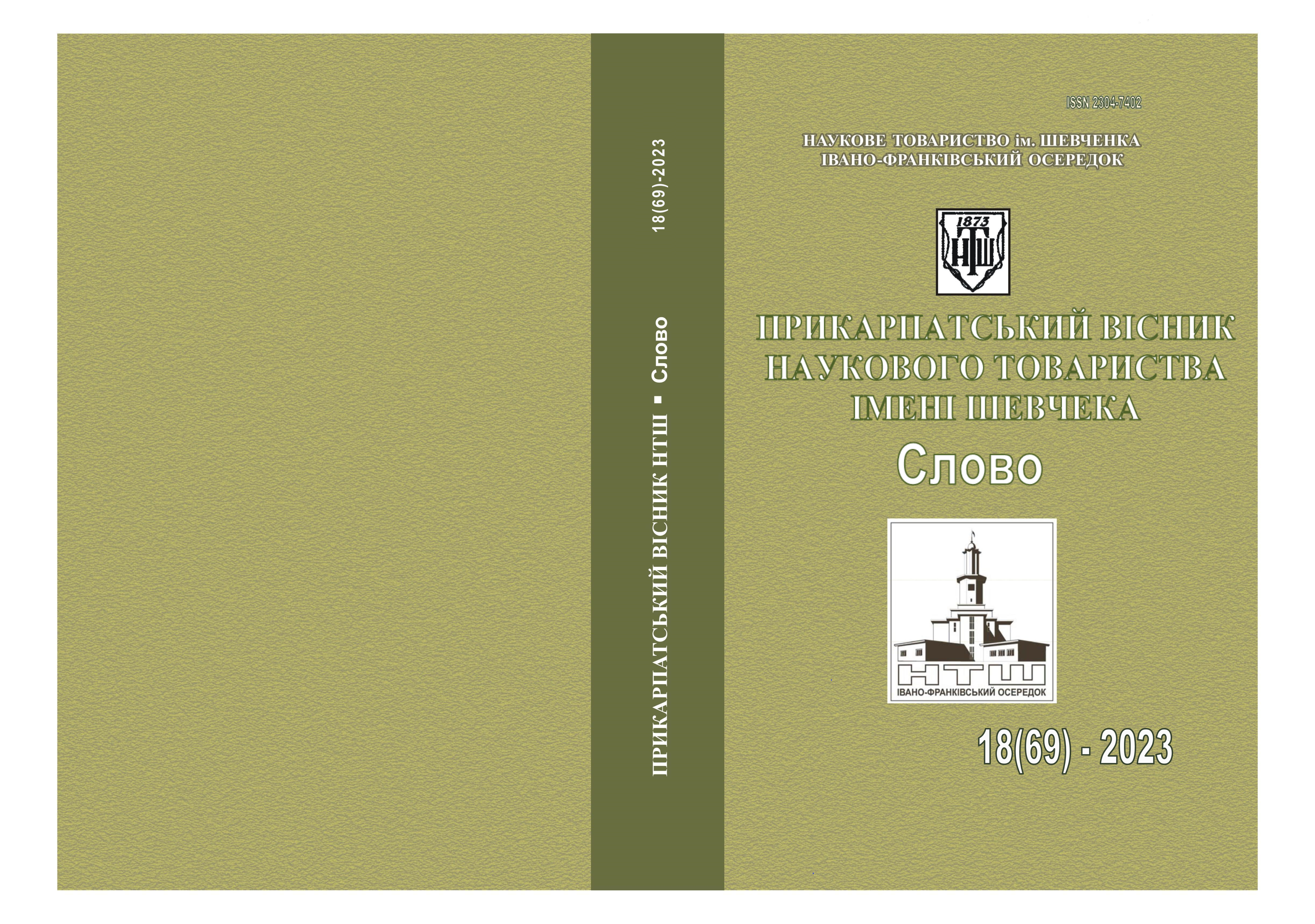HUTSULS COSMOHONICAL LEGEND: ETHNO-LINGUAL DIMENSION
DOI:
https://doi.org/10.31471/2304-7402-2023-18(69)-45-54Keywords:
cosmogonical legend, mythological unit, symbol, concept, meme.Abstract
Aim. The article is devoted to the study of the ethno-lingual consciousness of the Hutsul ethnic group of Ukrainian Carpathians. The material of the article is the cosmogonical legend "The Sun and the Moon, the Stars", recorded by Petro Shekeryk-Donykiv and included in his book "The Year in the Customs and Beliefs of the Hutsuls", which reflects a view of the creation of celestial bodies. The object of analysis in the proposed work is the components of the lingual consciousness of the personality represented in the text of the legend, which in unity determine its mental-worldview and spiritual-value postulates: mythological units, symbols, concepts, memes. The purpose of the article is to establish the peculiarities of the sphere of the sacred in the Hutsul ethno-lingual spiritual space, which reflected by lingual and cultural units,
Methods. The key research method is descriptive. At the same time, a comparative-typological analysis of the structural-semantic and axiological aspects of the analyzed units was used. The comparative method made it possible to focus attention on general and specific features of ethno-lingual units. Contextual analysis made it possible to establish key ethno-lingual units, to determine their place and role in the integral cosmogonical picture of the Hutsul world.
Results. The study made it possible to identify mythological units, symbols, concepts and memes that form the whole framework of the legend and determine worldview landmarks in the interpretation of the cosmogonical history of the world. It has been established that the creation and existence of heavenly bodies (the moon and stars) is a sacred act, deeply and organically connected with man, his nature and peculiarities of being. The dichotomy of the world, whose life is determined together by God and Aridnyk, is reflected in the nominal mythological units, as well as symbols and concepts. Man is the reflection and embodiment of this dichotomy and determines the state and being of the heavenly bodies. The anthropocentrism of the Hutsul worldview goes beyond the place of its existence - the earth, and it itself is woven into the history and existence of the universe.
Originality. A holistic analysis of ethnolinguistic units in the text of the Hutsul cosmogonical legend "Sun and Moon, Stars" was carried out. The author's conception of the lingual consciousness structure of the lingual personality is used to analyze and describe the mental, worldview and spiritual spheres in the ethno-lingual picture of the world.
Practical significance. The research material is a source of ethnolinguistic knowledge and it can be used for a comprehensive study of the Hutsul ethnolinguistic phenomenon, in cognitive linguistics, psycholinguistic studies of the ethnos, for describing the sphere of the sacred, and also as material for a lexicographic study of the Hutsul language.
References
Барчук В. Культурологічний аспект етнолінгвістики. Прикарпатський вісник НТШ «Слово». Івано-Франківськ. 2018. Вип. 3 (47). С. 73-85.
Біблія або Книги Святого Письма Старого й Нового Заповіту. Ukrainian Bible: United Bible Societies. 1991.
Войтович В. Українська міфологія. Київ: Либідь. 2002.
Кононенко В. Символи української мови. Київ-Івано-Франківськ. 2013.
Скаб М.В. Закономірності концептуалізації та мовної категоризації сакральної сфери. Чернівці: Рута. 2008.
Слобідський С. Закон Божий: Підручник для сім’ї та школи. Київ. 2003.
Хобзей Н. Гуцульська міфологія: етнолінгвістичний словник. Львів. 2002.
Шекерик-Доників П. Рік полудь звичєїв и віровань гуцулів. Верховина: Гуцульщина. 2009.
Штейнер Р. Очерк тайноведения. Пер. с нем. Ленинград: Эго. 1991.

